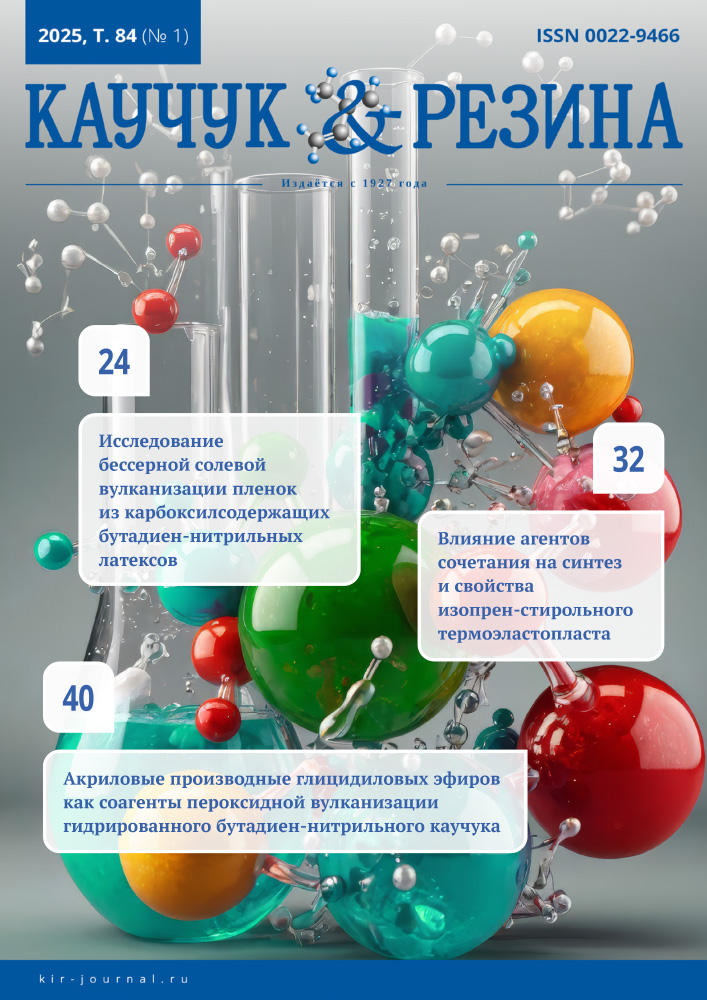Влияние пластикации изопренового каучука на тангенс угла механических потерь его вулканизатов при 60 °С. Часть 3. Изучение вкладов молекулярной массы и степени воздействия пластикации каучука
Дата публикации 25.02.2025
Как цитировать
Аннотация
Третья (заключительная) часть статьи, посвященной изучению влияния пластикации изопренового каучука (СКИ-3) на тангенс угла механических потерь при 60 °С его вулканизатов (tg60). В данной работе подробно исследованы зависимости вкладов (γмм) и (γα) величины молекулярной массы (ММ) и степени воздействия пластикации (α) на показатель tg60 соответственно. Выяснено, что алкильные и аллильные макрорадикалы, появляющиеся в ходе процесса механокрекинга, способствуют снижению tg60 за счет фактора α. Процесс окислительной деструкции макромолекул СКИ-3, приводящий к появлению кислородсодержащих макрорадикалов, наоборот, повышает tg60. Нежелательное повышение tg60 особенно заметно при повышенной температуре пластикации за счет резкого роста γмм. Выдвинуты предположения, объясняющие различное влияние алкильных, аллильных и кислородсодержащих макрорадикалов на величину tg60. Процесс рекомбинации различных по химической природе макрорадикалов повышает tg60 за счет роста вкладов γмм и γα в этот показатель. Наличие макромолекул СКИ-3, не подвергшихся процессу пластикации, оказывает положительное влияние на показатель tg60: он заметно снижается с уменьшением ММ макромолекул СКИ-3 при росте продолжительности пластикации.

